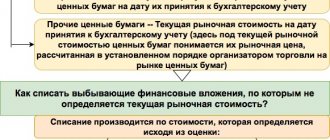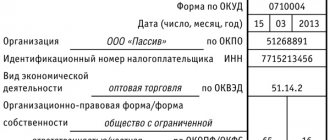PBU in 2020: the whole list
Different organizations must have different accounting standards in 2020 and take into account different accounting principles. Accordingly, from the general list of PBUs for 2020, you should select the PBUs you need. We present a table with the current list of PBUs for 2020 and explain the basic procedure for their application.
| PBU for 2020 table | |
| Name | Standard |
| PBU 1/2008 “Accounting policies of the organization” | Order of the Ministry of Finance of Russia dated October 6, 2008 No. 106n |
| PBU 2/2008 “Accounting for construction contracts” | Order of the Ministry of Finance of Russia dated October 24, 2008 No. 116n |
| PBU 3/2006 “Accounting for assets and liabilities, the value of which is expressed in foreign currency” | Order of the Ministry of Finance of Russia dated November 27, 2006 No. 154n |
| PBU 4/99 “Accounting statements of an organization” | Order of the Ministry of Finance of Russia dated July 6, 1999 No. 43n |
| PBU 5/01 “Accounting for inventories” | Order of the Ministry of Finance of Russia dated June 9, 2001 No. 44n |
| PBU 6/01 “Accounting for fixed assets” | Order of the Ministry of Finance of Russia dated March 30, 2001 No. 26n |
| PBU 7/98 “Events after the reporting date” | Order of the Ministry of Finance of Russia dated November 25, 1998 No. 56n |
| PBU 8/2010 “Estimated liabilities, contingent liabilities and contingent assets” | Order of the Ministry of Finance of Russia dated December 13, 2010 No. 167n |
| PBU 9/99 “Income of the organization” | Order of the Ministry of Finance of Russia dated May 6, 1999 No. 32n |
| PBU 10/99 “Expenses of the organization” | Order of the Ministry of Finance of Russia dated May 6, 1999 No. 33n |
| PBU 11/2008 “Information about related parties” | Order of the Ministry of Finance of Russia dated April 29, 2008 No. 48n |
| PBU 12/2010 “Information by segments” | Order of the Ministry of Finance of Russia dated November 8, 2010 No. 143n |
| PBU 13/2000 “Accounting for state aid” | Order of the Ministry of Finance of Russia dated October 16, 2000 No. 92n |
| PBU 14/2007 “Accounting for intangible assets” | Order of the Ministry of Finance of Russia dated December 27, 2007 No. 153n |
| PBU 15/2008 “Accounting for loans and credits and the costs of servicing them” | Order of the Ministry of Finance of Russia dated October 6, 2008 No. 107n |
| PBU 16/02 “Information on discontinued activities” | Order of the Ministry of Finance of Russia dated July 2, 2002 No. 66n |
| PBU 17/02 “Accounting for expenses for research, development and technological work” | Order of the Ministry of Finance of Russia dated November 19, 2002 No. 115n |
| PBU 18/02 “Accounting for income tax calculations” | Order of the Ministry of Finance of Russia dated November 19, 2002 No. 114n |
| PBU 19/02 “Accounting for financial investments” | Order of the Ministry of Finance of Russia dated December 10, 2002 No. 126n |
| PBU 20/03 “Information on participation in joint activities” | Order of the Ministry of Finance of Russia dated November 24, 2003 No. 105n |
| PBU 21/2008 “Changes in estimated values” | Order of the Ministry of Finance of Russia dated October 6, 2008 No. 106n |
| PBU 22/2010 “Correcting errors in accounting and reporting” | Order of the Ministry of Finance of Russia dated June 28, 2010 No. 63n |
| PBU 23/2011 “Cash Flow Statement” | Order of the Ministry of Finance of Russia dated February 2, 2011 No. 11n |
| PBU 24/2011 “Accounting for costs for the development of natural resources” | Order of the Ministry of Finance of Russia dated October 6, 2011 No. 125n |
| Regulations on accounting of long-term investments* | Letter of the Ministry of Finance of Russia dated December 30, 1993 No. 160 |
| Regulations on accounting and reporting* | Order of the Ministry of Finance of Russia dated July 29, 1998 No. 34n |
New regulations on accounting for inventories
In pursuance of the Program for reforming accounting in accordance with international financial reporting standards, approved by Decree of the Government of the Russian Federation dated 03/06/1998 No. 283, the Ministry of Finance of the Russian Federation, by order of 06/09/2001 No. 44n, approved a new edition of the Accounting Regulations “Accounting for inventories” ( PBU 5/01). This Regulation was registered with the Ministry of Justice of the Russian Federation on July 19, 2001 (No. 2806) and, therefore, is a legal document.
In connection with the publication of PBU 5/01, the order of the Ministry of Finance of Russia dated June 15, 1998 No. 25n, which approved PBU 5/98, as well as other orders of the Ministry of Finance of Russia, which introduced changes and additions to PBU 5/98 (dated December 30. 1999 No. 107n and dated March 24, 2001 No. 31n).
Order No. 44n comes into force starting with the financial statements of 2002 (in contrast to PBU 6/01 “Accounting for fixed assets”, which came into force in 2001), which makes the work of accountants easier.
In this article we will show the main differences between the new edition of PBU 5/01 “Accounting for inventories” and the old PBU 5/98.
The approval of the new edition of PBU 5/01 is due mainly to the need to change the accounting procedure for low-value and wear-and-tear items set out in the old version of this document (PBU 5/98), to bring it into line with the accounting rules contained in the Instructions for the application of the new chart of accounts accounting. Hence, the main difference between PBU 5/98 and PBU 5/01 is the absence in the latter of any mention of low-value and wear-and-tear items (definition, valuation, depreciation, procedure for disclosing information about interbank business in financial statements, etc.), since they have ceased to be an object of accounting .
In PBU 5/01, in contrast to PBU 5/98, the concept of “organization” is given. “An organization ... is understood as a legal entity under the legislation of the Russian Federation (with the exception of credit organizations and budgetary institutions).”
PBU 5/01 provides a slightly different definition of goods. The first innovation is of an editorial nature, consists in removing the words “or resale” and is logical, since in the old definition the two terms “sale” and “resale” were synonymous within the meaning of the document. The second innovation is the removal of the words “without additional processing”, which largely changes the very definition of “goods”. This means that goods entering the organization may be subject to some additional processing. This innovation is also justified, since in practice some goods have always been subject to additional processing (cutting, packaging, packaging, etc.).
PBU 5/01 provides a broader interpretation of the accounting unit for inventories. If in PBU 5/98 it is “an item number developed by an organization in the context of their names and (or) homogeneous groups (types),” then in PBU 5/01 it is said that this unit, in addition to the item number, can be “a batch, a homogeneous group and so on.". This interpretation of the accounting unit for inventories is more consistent with the requirements of practice.
PBU 5/98 defined a list of costs that “could” be included in the actual cost of inventories, while PBU 5/01 provides a specific list of these costs.
In paragraph 6 of PBU 5/01, when listing the actual costs for the acquisition of inventories, in particular, it says “customs duties,” while PBU 5/98 said “customs duties and other payments.” “Other payments” apparently meant other customs payments (fees for customs clearance, for customs escort, customs fees for storage of goods, etc.). Based on this, it may appear that these other payments should not be included in the actual cost of inventories. In fact, in our opinion, nothing has changed. Firstly, the above paragraph says that this cost includes “the amount of the organization’s actual costs for the acquisition...”. Secondly, at the end of the list of actual costs it says “other costs directly related to the acquisition of inventories.”
PBU 5/98 stated that the actual costs of purchasing inventories include “the cost of paying interest on supplier loans (commercial loan)” and “the cost of paying interest on borrowed funds” (emphasized by us - V.P.) . From this it was possible to conclude that we are talking only about paid interest, although in fact, based on the principle of temporal certainty of the facts of economic life, accrued interest should have been classified as expenses. In paragraph 6 of PBU 5/01, the correct clarification was made that it is the accrued (and not paid) interest on supplier loans and on borrowed funds that relate to the actual costs of purchasing inventories. As before, the above interest accrued after the accounting of inventories is included in operating expenses.
What is new is the indication in paragraph 6 of PBU 5/01 that “actual costs for the acquisition of inventories are determined (increased or decreased) taking into account the amount differences that arise before the inventories are accepted for accounting in cases where payment is made in rubles in an amount equivalent to the amount in foreign currency (conventional monetary units).” The same paragraph provides a definition of the amount difference, which, in principle, is similar to its definition given in paragraph 6.6 of PBU 10/99 “Expenses of the organization.”
Paragraph 9 of PBU 5/01 states for the first time how the actual cost of inventories remaining from the disposal of fixed assets and other property is determined - based on their current market value as of the date of acceptance for accounting. This value is also defined here as the amount of money that can be obtained as a result of the sale of these assets.
Paragraph 10 of PBU 5/98 provided only one method for assessing inventories received under contracts providing for the fulfillment of obligations (payment) in non-monetary means - at the cost of goods (valuables) transferred or to be transferred by the organization. PBU 5/01 specifies a second method for valuing the above assets (if it is impossible to use the first method) - “based on the price at which similar inventories are purchased in comparable circumstances.” Both assessment methods are consistent with paragraph 6.3 of PBU 10/99 “Expenses of organizations”.
The organization's costs for delivering inventories and bringing them into a condition suitable for use for inventories acquired for a fee, in accordance with paragraph 6 of PBU 5/98, are included in their actual cost. However, it was unclear where to assign the above costs for inventories made as a contribution to the authorized (share) capital of organizations, received under a gift agreement or free of charge, as well as received under agreements providing for the fulfillment of obligations (payment) in non-monetary means. In paragraph 11 of PBU 5/01, this problem is solved: these costs are included in the actual cost of inventories. In addition, PBU 5/01 clarifies the list of costs for bringing inventories to a state in which they are suitable for use for the planned purposes. In particular, costs for sorting and packaging goods have been added. However, in our opinion, this only applies to costs that arise before the assets are accepted for accounting. For example, the store’s expenses for packaging goods, already reflected in the debit of account 41 “Goods,” should be written off to account 44 “Sales expenses.”
What is also new in PBU 5/01 is that when assessing released inventories, the primary focus is on the group, and not the type of these assets, as was the case in PBU 5/98 (see paragraphs 16, 18, 21, 23, 27 ).
Paragraph 11 of PBU 5/98 stated that the actual cost of inventories, in which they are accepted for accounting, is not subject to change, except in cases established by the legislation of the Russian Federation and provided for by these Regulations. In the next paragraph of this paragraph, this case was indicated: a decrease in the price of inventories during the year or the obsolescence of goods and materials and their loss of their original quality. In these cases, inventories are reflected in the balance sheet at the end of the year at the price of possible sale, if it is lower than the initial cost of procurement (purchase), with the difference in prices being attributed to the financial results of the organization. The following entry was made for the above difference:
Debit 80 “Profits and losses” Credit accounts for inventory accounting.
Consequently, this entry adjusted (decreased) the accounting estimate (actual cost) of the above assets.
In accordance with paragraph 25 of PBU 5/01, in this case, a reserve is formed to reduce the value of material assets, also at the expense of financial results.
PBU 5/01 adds another reason for adjusting the valuation of inventories: loss of original quality not only partially, but also completely. In this case, an entry will be made (according to the new chart of accounts):
Debit 91 “Other income and expenses” Credit 14 “Reserves for reduction in the value of material assets.”
When preparing the annual balance sheet, the amount of the created reserve will be deducted (without posting) from the balance of accounts for accounting for inventories* and the difference is reflected in section II “Current assets”.
_________
PBU 5/01, in contrast to PBU 5/98, provides for adjustments to the assessment of equipment for installation.
_________
In this case, the accounts for accounting for these assets are not credited, and their balance does not change. Thus, PBU 5/01 does not talk about cases of changes in the accounting value of inventories, and therefore in its paragraph 12 the words “.. and provided for by these Regulations” are removed.
In connection with the change in the method of adjusting the valuation of inventories in the financial statements, information is subject to disclosure not about the difference between the actual cost of inventories and the cost of their possible sale (clause 25 of PBU 5/98), but “about the amount and movement of reserves for reducing the cost of material assets "(clause 27 PBU 5/01).
In paragraph 27 of PBU 5/01, an addition was made that not all information on inventories is subject to disclosure in the financial statements, but taking into account its materiality. In addition, the words “as part of information about the organization’s accounting policy” have been removed from the beginning of this paragraph, since not all of the information listed below is an element of the accounting policy (for example, about the cost of inventories pledged).
An innovation in the PBU is the clarification of a number of terms and definitions (see Table 1).
| PBU 5/98 | PBU 5/01 |
| Property (clause 2.3) | Assets (clause 2.4) |
| Costs for transport services (clause 6) | Costs for transport services (clause 6) |
| Procurement and storage apparatus (item 6) | Procurement and warehouse division (item 6) |
| Posting date (clause 9) | Date of acceptance for accounting (clause 9) |
| Free of charge (clause 9) | Under a gift agreement or free of charge (clause 9) |
| Acquired under contracts providing for the fulfillment of obligations (payment) in non-monetary means (clause 10) | Received under contracts providing for the fulfillment of obligations (payment) in non-monetary means (clause 10) |
| Determined (clause 10) | Admitted (clause 10) |
| Distribution costs (clause 12) | Selling expenses (clause 13) |
| Methods (clause 15) | Methods (clause 16) |
| During the reporting period (clause 15) | Based on the assumption of the consistency of application of accounting policies (clause 16) |









